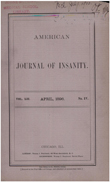Basal cortisol, dexamethasone suppression of cortisol, and MHPG in adolescents after the 1988 earthquake in Armenia
Abstract
OBJECTIVE: This study evaluated basal salivary cortisol, 3-methoxy-4- hydroxyphenylglycol (MHPG), and cortisol suppression following dexamethasone administration in adolescents exposed to two levels of earthquake-related trauma. METHOD: Five years after the 1988 earthquake, saliva samples were obtained from 37 adolescents from two cities in Armenia at different distances from the epicenter. Baseline saliva samples were obtained at 8:00 a.m., 4:00 p.m., and 11:00 p.m., following which 0.5 mg of dexamethasone was administered. Nine and 17 hours later, saliva samples were again obtained. Subjects were evaluated for posttraumatic stress and depressive reactions through use of self-report instruments. RESULTS: Significantly lower mean baseline 8:00 a.m. cortisol levels and greater day 24:00 p.m. cortisol suppression following dexamethasone were observed in the more symptomatic adolescents living in the city closer to the epicenter. Of the three symptom categories of posttraumatic stress disorder (PTSD), only intrusion (category B) symptoms were significantly correlated with basal morning cortisol levels and percent suppression by dexamethasone. The more highly exposed adolescents also exhibited a more rapid decline in MHPG levels over the course of day 1. CONCLUSIONS: The findings indicate that chronic posttraumatic stress reactions among adolescents exposed to catastrophic disaster are associated with hypothalamic- pituitary-adrenal (HPA) axis alterations. The findings are congruent with those previously described in adults with chronic PTSD. Persistent intrusion (category B) symptoms may constitute continued episodes of distress and evoke repeated physiological stress responses, which, over time, alter HPA axis function. The MHPG findings suggest that there may be diurnal changes associated with severity of posttraumatic stress symptoms.
Access content
To read the fulltext, please use one of the options below to sign in or purchase access.- Personal login
- Institutional Login
- Sign in via OpenAthens
- Register for access
-
Please login/register if you wish to pair your device and check access availability.
Not a subscriber?
PsychiatryOnline subscription options offer access to the DSM-5 library, books, journals, CME, and patient resources. This all-in-one virtual library provides psychiatrists and mental health professionals with key resources for diagnosis, treatment, research, and professional development.
Need more help? PsychiatryOnline Customer Service may be reached by emailing [email protected] or by calling 800-368-5777 (in the U.S.) or 703-907-7322 (outside the U.S.).



